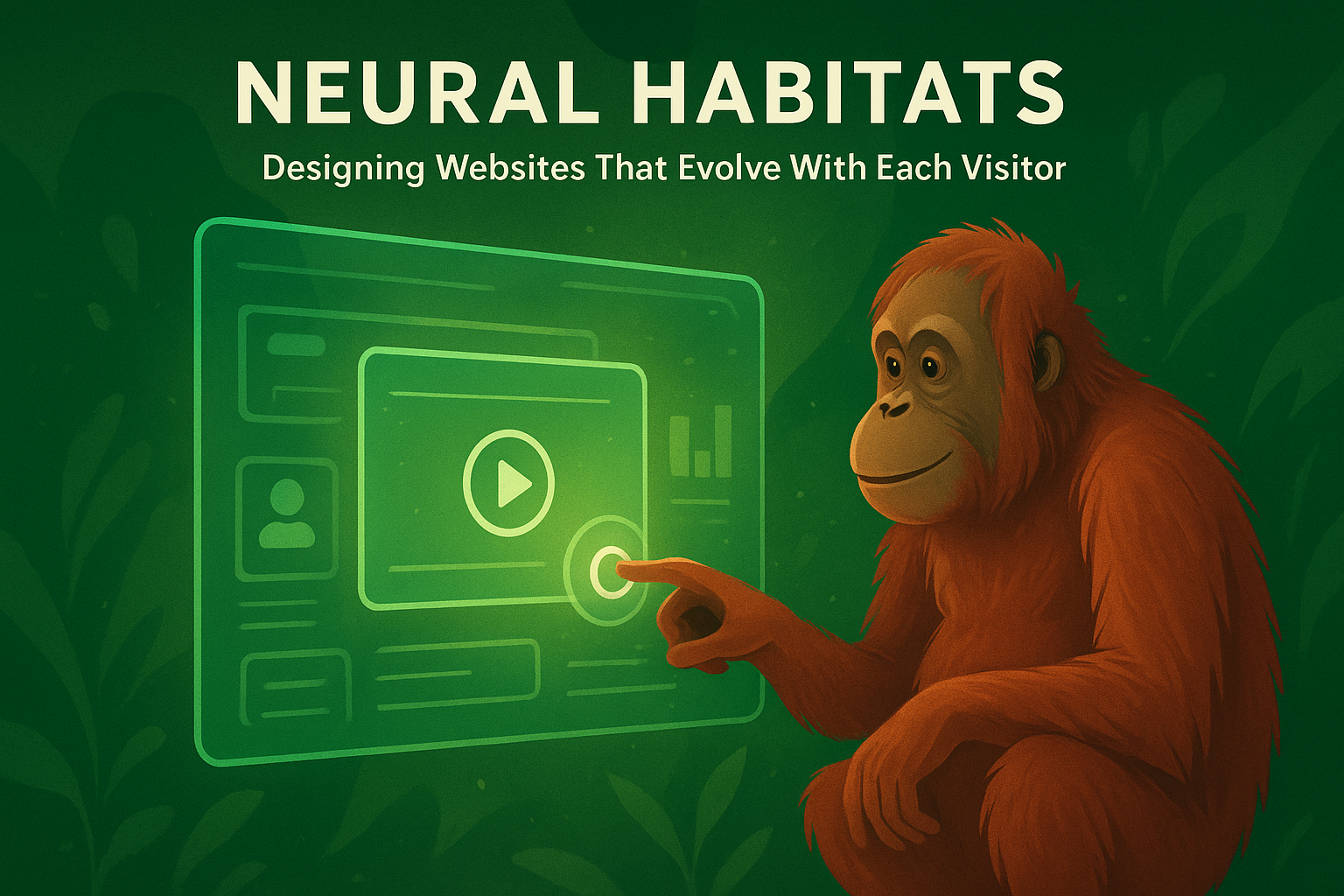The Web Is About to Get Wild
In 2025, static websites feel like museum pieces. Even “personalized” pages — swapping banners or changing a hero image — are beginning to look outdated. The next frontier is here: websites that behave like living organisms, responding in real time to each visitor’s intent. We call them neural habitats.
Imagine a homepage that quietly tracks micro-gestures — how long you hover, which color palette you linger on, what words make your eyes pause — and then reorganizes itself, morphing its navigation, tone, and offers to suit you before you even click. This isn’t science fiction anymore; the tech stack already exists.
From Personalization to Adaptation
Traditional personalization = predefined variants (“if user is from X, show Y”). Neural habitats go deeper:
-
Live data ingestion: Combining analytics, AI, and behavioral cues.
-
Real-time morphing: Layout, copy, CTAs, and even pricing adapt on the fly.
-
Ecosystem logic: Pages compete and cooperate like species in an ecosystem, optimizing for attention and conversion.
Where personalization feels like a polite concierge, adaptation feels like a living space that senses and responds to you.
Why This Matters for Brands in 2025
-
Frictionless engagement: Visitors land on a page already attuned to their intent.
-
Radical relevance: Offers, content, and visuals match subconscious cues.
-
Loyalty through “aliveness”: When a site feels alive and attentive, visitors come back.
-
SEO boost: Lower bounce rates, higher dwell time, more natural link-sharing.
Brands adopting neural habitats early will build experiences competitors can’t easily copy.
The Technology Behind Neural Habitats
Think of it as an orchestra of tools:
-
Real-time analytics (heatmaps, gaze tracking, micro-scroll mapping).
-
Generative AI (copy, images, and layouts produced on demand).
-
Behavioral science engines (predictive modeling based on micro-behaviors).
-
Edge computing (split-second processing without lag).
Together, these create a digital environment that “breathes” with the user.
Designing Your Own Neural Habitat
If you’re considering this leap, start small:
-
Test micro-animations or dynamic CTAs first.
-
Introduce real-time recommendations beyond product lists.
-
Gradually deploy AI-driven layout shifts.
Then scale into a full neural habitat — a digital ecosystem tuned to every visitor.
Final Thoughts
We’ve entered an age where UX isn’t just designed; it’s alive. For brands ready to lead in 2025, neural habitats offer a once-in-a-decade opportunity to stand out. Build a website that behaves like a living organism, and your audience won’t just visit — they’ll explore, engage, and evolve with you.


